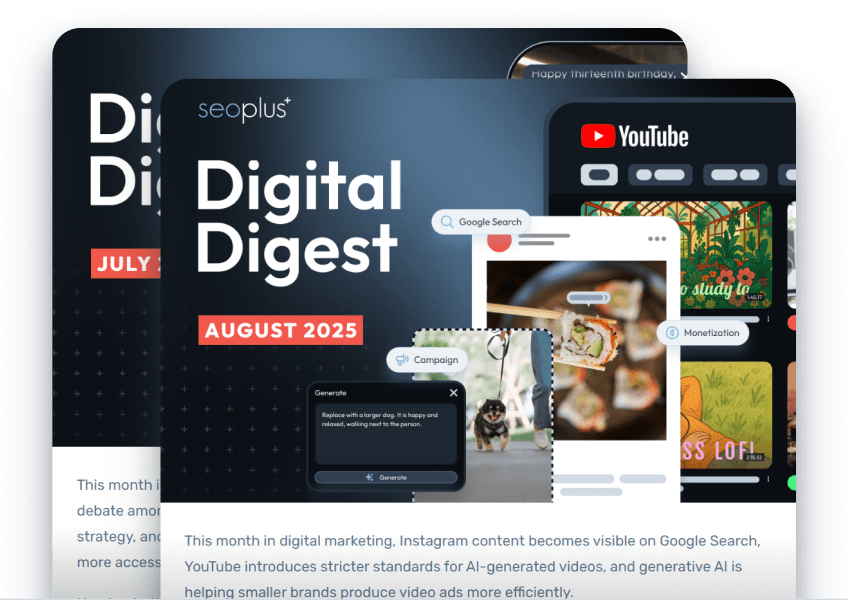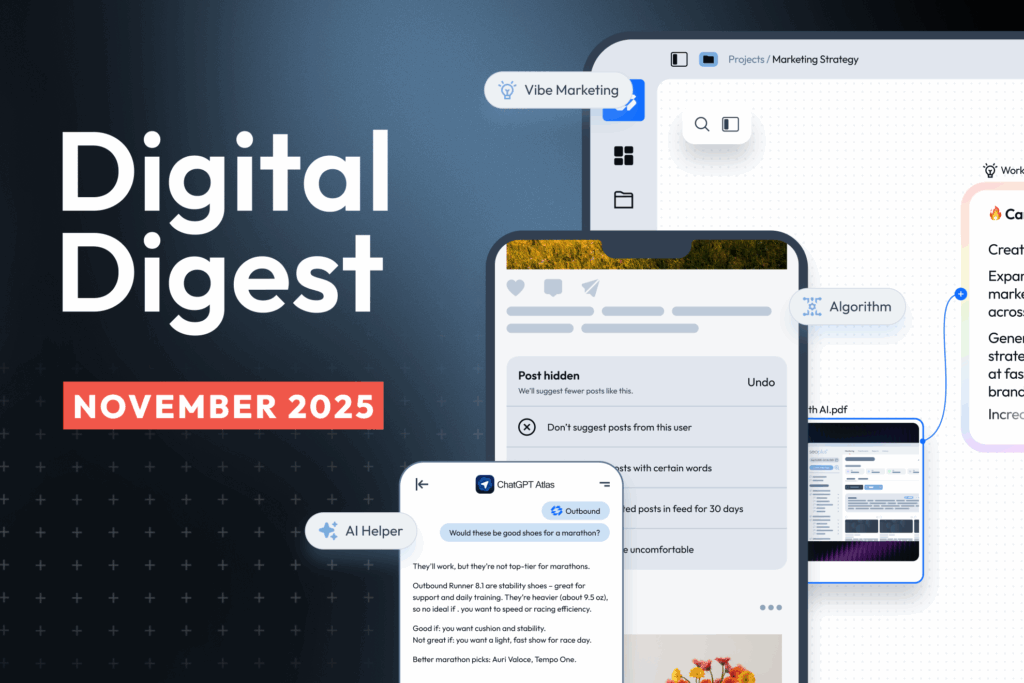Content creation is more than “just writing” or plopping in as many meme-worthy Shutterstock images as possible – it’s a daring dance that involves being creative, engaging, and targeting the right audience. Not everyone gets that, including most competitors, so take advantage of that lapse in judgement and make your brand stand out as something unique. To achieve this, your brain needs to process multiple streams of information and transmogrify it into something special. And fast. It’s not a task for the faint of heart.
So, what if you don’t want to just get the ball rolling? How about turning it into a boulder of engagement goodness to speed up lead accumulation, Indiana Jones-style? After all, great content is a core pillar of any successful digital marketing strategy, affecting everything from brand reputation to your site’s click-through rate (CTR). Why miss out?
Today, let’s explore how great web content can help you leapfrog over competitors and stay in the spotlight. We’ll also touch on some core fundamentals of writing that can potentially lead to, well, more leads! All it takes is passion, dedication, and a genuine interest in what your company brings to the proverbial table.
Content planning for leads 101
Ever play Simcity? You know, the game where you influence the growth and success of a metropolis by planning an effective infrastructure that appeals to the simulated traffic in the world? Well, content marketing is a lot like that. For every blog post, internal redirect link and accompanying web page, you need to set the right foundation in order to get the results you want.
Plenty of folks have trouble figuring out what they should do when it comes to writing, but you need to dive deeper than a general perspective to get anywhere. Any monkey can sit at a computer and start typing if they want to, but it’s the arrangement of those words that makes all the difference.
So, let’s talk structure. Here are some key things to incorporate, using a standard blog as an example:
- A compelling intro that summarizes what you’ll cover, all while conveying the core message and general tone to the audience.
- A minimum of three sections with their own subheadings, enabling you to cover multiple focuses relating to the same topic.
- longer blogs are better, but only if it makes sense for the topic; don’t write 1,200 words on gardening tips, please, breaking it into four 400-word bite-sized posts instead.
- Keyword-stuffing is a big no-no. It’ll be clear as day that you’re just advertising if discretion isn’t applied. Make a few natural insertions that don’t stick out like a sore thumb, or your users will be thumbing the back button.
- Work in a compelling, non-salesy call-to-action (CTA), which can funnel users through to a specific service, newsletter sign-up or web page.
- Return to your core message at the end; think of the final paragraph as a closing statement and recap.
Each blog should have a purpose that you don’t make obvious to the reader. The same principle applies to other forms of content; you don’t want to be pushy, but you don’t want to leave readers wondering why they bothered coming to your site, either. If you’re trying to convince them to click that CTA or purchase a specific service, don’t make it feel like you’re a slimy salesman selling scrub brushes door-to-door. Yuck. In fact, don’t even name-drop your company. Aim for the subtle-and-tempting approach, include opportunities for leads such as via strategic hyperlink placements and exciting content that pulls the audience in, then watch those numbers. With the right angle for your brand image and a respect for what readers want to see, you could make a bigger impression.
Be a storyteller, not just another blogger!
Ever pick up a book from your favourite writer without hesitating because you know what to expect from them? The same principle applies to target audiences engaging with your content. If your web presence is known for punchy, entertaining text and imagery that suits the brand image, people will react more quickly and maintain engagement for longer between updates.
If you’ve already achieved this, don’t attempt to fix what isn’t broken. Instead, reinforce it. You’ll find that whipping up fascinating experiences inspired by customer feedback can be a lot faster, more fun, and less stressful. Just note that, in order to create worthwhile and compelling content, your voice and those of your customers are needed.
For example, anyone can whittle out a short blog on home maintenance tips and keep it general (therefore not requiring much research or time). But wait, hasn’t this been done by hundreds of other bloggers? Do you really want to repeat the same tired-old tips that can easily be found elsewhere? Make this a moment for your expertise and the unique experience of your customers to shine. Suck the audience in and be better, lending your knowledge, touching on specific tools to use and mistakes to avoid based on things you’ve seen over the years, and including customer quotes from reviews that are relevant to your topic. Or, why not build out a case-study-esque article that profiles an amazing experience by a select customer? Both sound like a lot of work, sure, but it’s a whole lot more rewarding than not contributing anything meaningful. Otherwise, why bother?
Great stories serve as an easy way to populate your website with fresh perspectives, ideas, and explorations of typical and atypical scenarios. They can paint a clearer picture of what potential customers can expect, and you have full control over how it presents your company. Whether you’re a butcher, baker, injury lawyer, or candlestick maker, everyone has a story to tell.
Do more than the bare minimum
Any business can get a basic website up and running, populating it with just enough content to set the gears of engagement in motion. But why stop there? Less isn’t always more, and your audience wasn’t born yesterday; they’ll notice if you’ve put in the time and effort when it comes to your online presence. And honestly, in an age of clickbait competitors and sneaky snakes in suits, there’s a necessity to stay on your toes. Go the extra mile or three – don’t be afraid to allocate more of your budget towards web design or content creation.
Doing the bare minimum often means achieving the bare minimum.
Avoiding “shredded wheat syndrome”
Okay, so this blog post is a lengthy one, but it also covers a ton of ground. It has a purpose. In this case, we’re hoping to help small-to-medium sized businesses looking for insider tips on improving their content strategy. There are instances when longer blogs are great, such as for technical or in-depth topics like those for healthcare professionals or start-ups looking for guidance. We’ve seen it work wonders for a lot of clients over the years.
That said, we’ve also seen a lot of instances where digesting website and blog content equates to a shredded wheat breakfast in the middle of the desert (we’re guessing, at least). This is especially true if non-target readers are checking it out, or if your topic doesn’t need to be drawn out over a massive draft! So, we can’t emphasize this enough: Not everyone wants to read those same-old top-ten lists or heavy blogs that read like a thesis. We never know every reader personally and never will, so embrace that fact and run with it!
Our constant research and tracking of audience engagement shows that, no matter how technical or niche your offerings are, web content doesn’t have to be dry or bland. In fact, teams who overhaul their tone, voice, and topic strategy to be more interesting could enjoy improved results more quickly.
It’s easy to get immersed in a bubble of terminology and target focuses, especially in companies with very specific, technical, or niche topics to cover. However, there’s always room for improvement, and you’re missing out on a lot of potential by not trying new things. Readers from all walks of life love fresh experiences, regardless of whether they’re engineers, medical experts, or kooky cupcake-makers. Think of it as having the same meal every day for lunch for two years – sure, it fills your stomach, but it’s hardly something to get excited about.
So, what can you write about to keep adding fresh, engaging content? Here are some examples:
- Customer success stories turned into blogs, complete with quotes from real feedback.
- An occasional listicle (“Top X things…” article). Keep each section short to add more variety!
- Have a bunch of hi-res photos from an event or customer? Turn them into a photo essay or long-form article!
- Case studies that keep customers and companies anonymous but tell unique, compelling stories.
- Holiday-focused blog posts; have some fun once in a while with Christmas or Halloween-themed reads that still remain relevant to your company (X favourite Christmas movies hand-picked by our team, etc).
- Coverage of local events, even if you’re not attending! It could deliver exposure to snag you a spot next year and shows that you’re interested in what goes on in the community.
All in all, don’t be afraid to change things up, be open to new styles (within reason) and keep things as dynamic as possible – your writers and your audience will thank you for it!
Don’t expect results overnight
Many of the literary greats – H.P Lovecraft, J.K Rowling, Stephen King – will tell you that they didn’t wave a magic wand and achieve success. The best content strategy is gradual, focused, and casts a wider net to pull in more readers-turned-leads. As you develop a reputation for specific content, ideal customers attracted to it will come back again and again if you keep catering to their interests. Through word of mouth, a competitive paid ads campaign, and regular content updates, you’ll see improved results.
In the end, great content marketing isn’t how many words you write. It’s what you do with them that counts. To quote Tony Montana from Scarface, “Go, do some things! Have some fun!” Be creative, flexible, open-minded, and complement what’s working with even more for your audience to gobble up.
Delicious!






